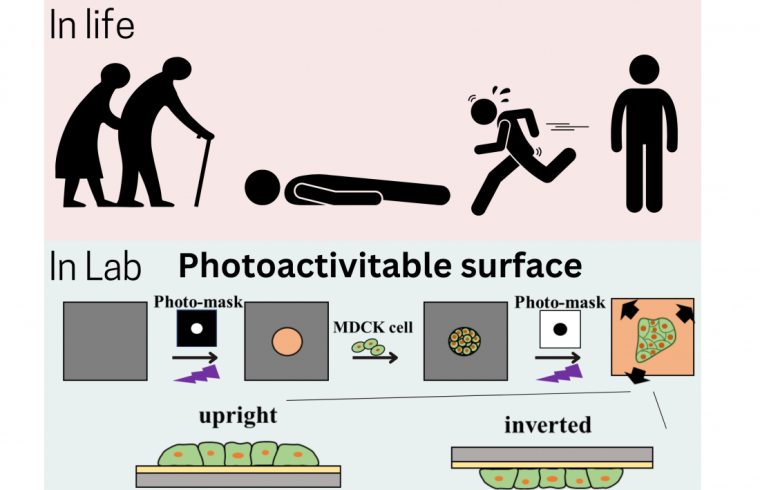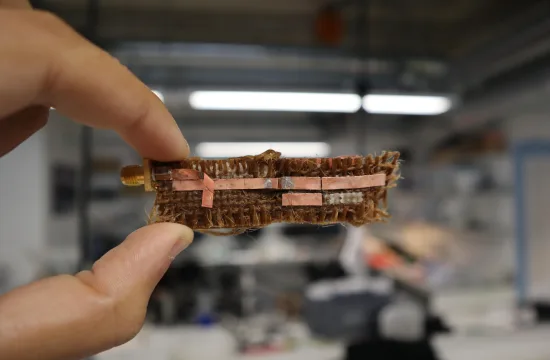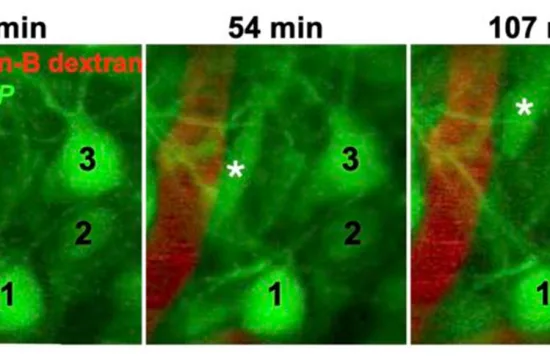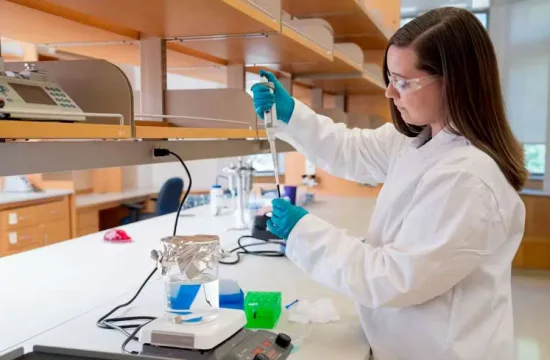Researchers have developed a specially coated, light-responsive surface that helps test how the direction of gravity impacts cell movements.
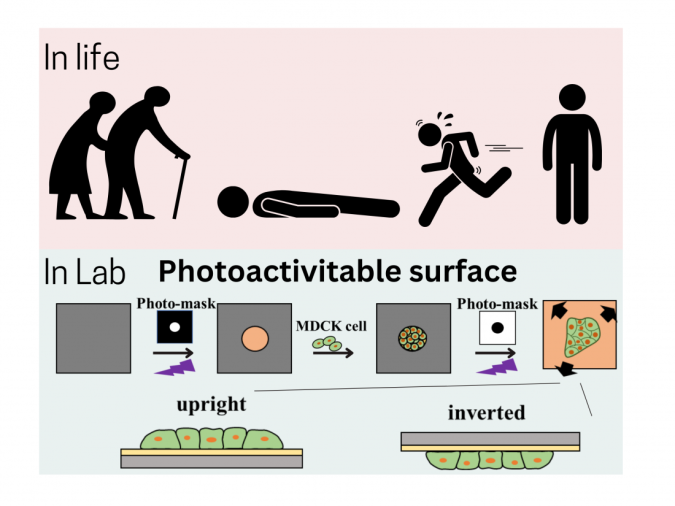
The findings, published in the journal Science and Technology of Advanced Materials, could lead to a better understanding of what happens to cells in people who are bedridden for prolonged periods and of the impact of gravity’s direction on cancer cell migration.
The special surfaces are made by coating glass slides with a combination of molecules that are responsive to light. Shining light on a central, circular area of the slide breaks up the molecules, clearing away a coating-free zone that cells can stick to. Once stabilized in this area, the scientists then use light to clear away an area surrounding the central circle.
This encourages the cells to move in an outward direction to fill the square. The team investigated what happens to cell movement when the slide is placed upright, with the cells lying on top and the direction of gravity impacting the cells from top to bottom. They then conducted a similar test with the slide flipped over while supported on either side so that the cells are inverted and the direction of gravity is from the bottom of the cells to their tops.
“We found that the direction of gravity hindered collective cell migration in the inverted position by reducing the number of outward-moving leader cells at cluster edges and by redistributing shape-forming filaments, composed of actin and myosin, so that they kept the cells bundled together,” explains biomaterials researcher, Shimaa Abdellatef, who is a postdoc at National Institute for Materials Science (NIMS).
The coated, light-responsive surfaces provide an advantage over currently available methods that study the impacts of gravity’s direction, as they require physical contact with the surface to which cells are attached. The new approach enables remote induction of cell migration.
“We plan to apply our approach to analyze the responses of cancer cells to the direction of gravity,” says NIMS nanoscientist, Jun Nakanishi, who led the study. “We expect to find differences between healthy and diseased cells, which could provide important information about cancer progression in bedridden patients.”

